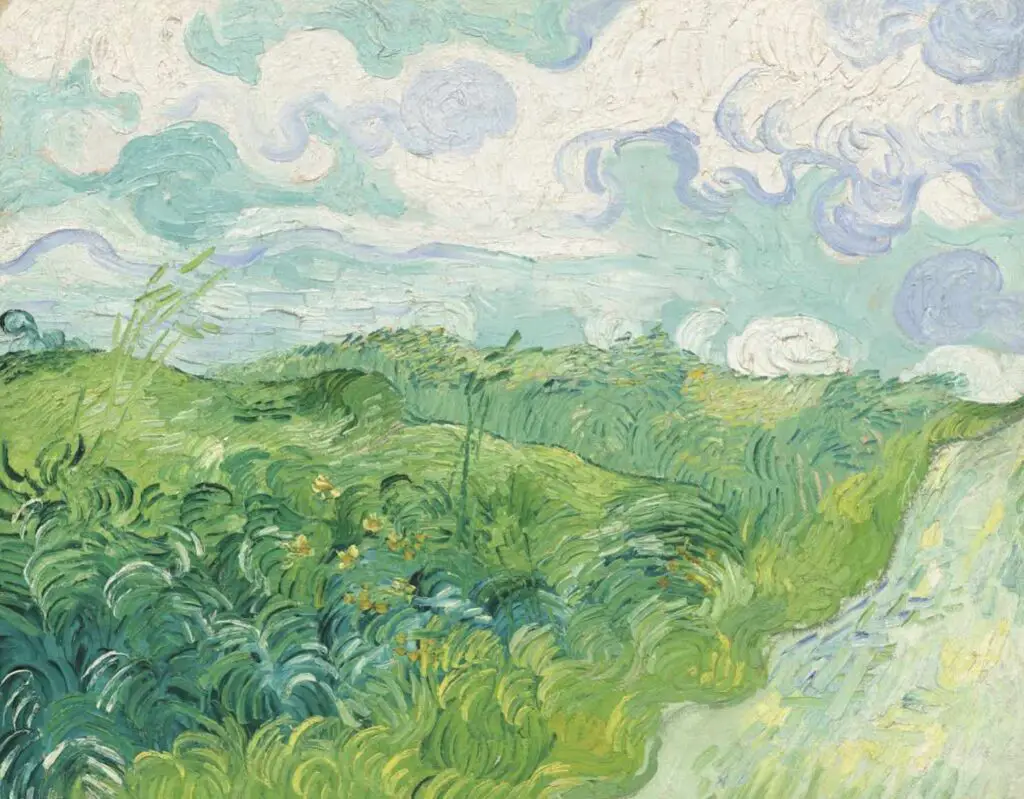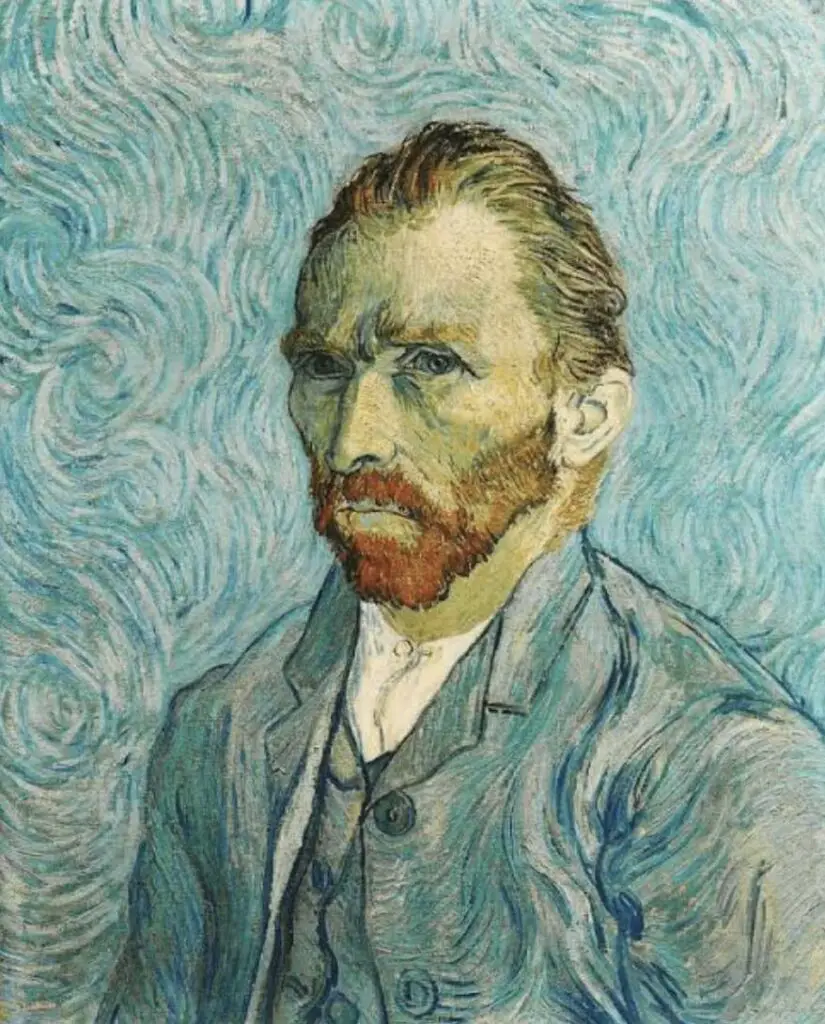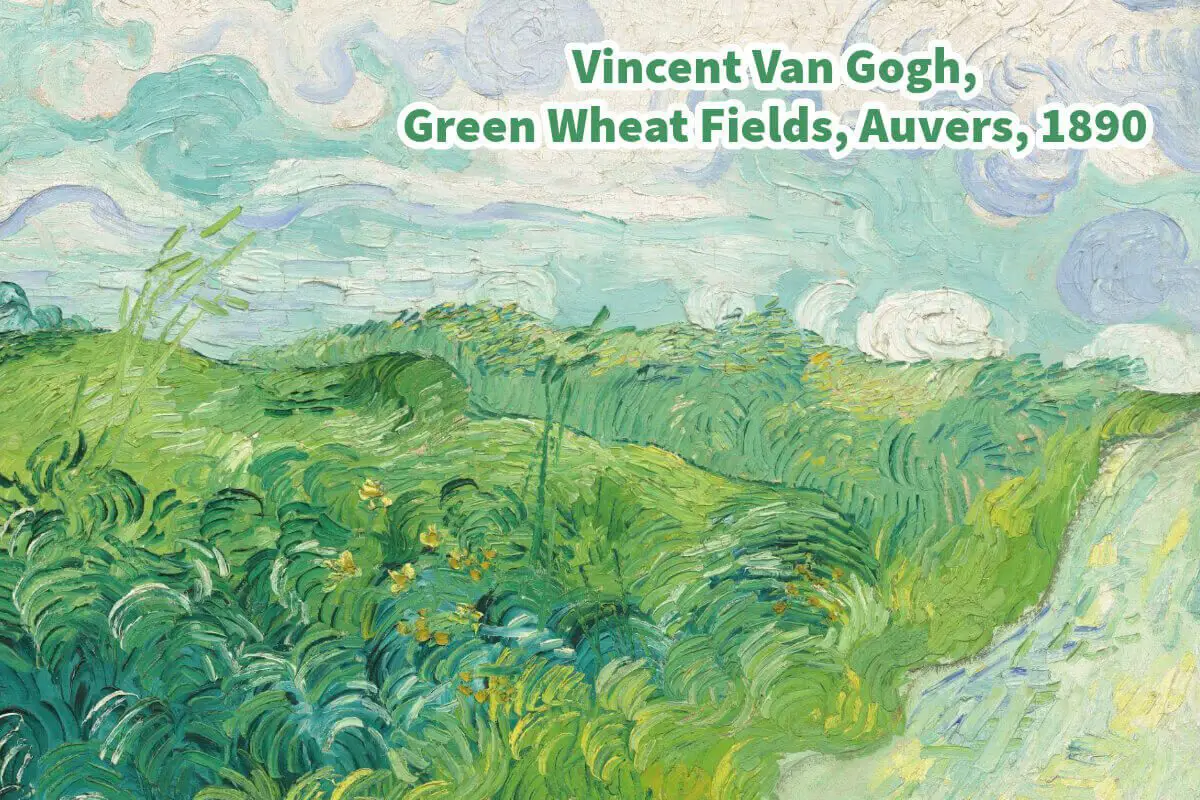Vincent Van Gogh holds a special place in my heart as one of my all-time favorite artists. His ability to harness the power of color and brush strokes to convey profound messages in his art has always left me in awe.
Among Vincent Van Gogh’s many masterpieces, “Green Wheat Fields, Auvers, 1890” is a significant work, mainly because it is often regarded as one of his final creations before his tragic passing. Read on as we delve deeper into this iconic painting and uncover why it holds such profound significance in art.
Table of Contents
- Exploring The Enigmatic Beauty Of “Green Wheat Fields, Auvers, 1890” By Vincent Van Gogh
- The Significance Of “Green Wheat Fields, Auvers, 1890”
- The Journey Of “Green Wheat Fields, Auvers”
- Frequently Asked Questions
- Related Questions
Exploring The Enigmatic Beauty Of “Green Wheat Fields, Auvers, 1890” By Vincent Van Gogh
Vincent Van Gogh, an enigmatic genius who needs no introduction to the art world, left behind a profound legacy that continues to inspire and bewitch art enthusiasts worldwide. Despite his tragically brief career, spanning a mere decade, he created an astonishing body of work comprising approximately 900 paintings and 1,100 drawings. From his early days as an art dealer to his self-determined path as a painter, Van Gogh’s artistic journey was marked by evolution and a relentless pursuit of self-expression.

One of his remarkable creations from his final months in Auvers-sur-Oise, France, was “Green Wheat Fields, Auvers, 1890.” We’ll unravel the significance of this painting, the context of its creation, and why it continues to matter in the realm of art.
The Evolution Of Van Gogh As An Artist
Vincent Van Gogh’s artistic journey is a fascinating narrative of self-discovery and transformation. Born in 1853, he meandered through various vocations, including a stint as an art dealer, before finding his true calling as an artist.
During his time in the Borinage region of Belgium, where he worked as a lay missionary among miners, he resolved to become an artist.

Largely self-taught, Van Gogh ventured to Paris in 1886. There, he honed his skills during a brief three-month stint in the studio of painter Fernand Cormon.
I also introduced him to the avant-garde art scene during this period, including encounters with artists like Paul Gauguin. His time in Paris marked a pivotal phase of artistic growth, setting the stage for what would come.
The Transformation In Arles
In pursuit of his artistic vision and seeking an escape from the increasingly turbulent atmosphere of Paris, Van Gogh set his sights on Arles, a picturesque town in southern France. The sun-drenched landscapes and the vibrant character of the region and its inhabitants left an indelible mark on Van Gogh’s artistic sensibilities.
In Arles, Van Gogh found his signature style, characterized by lush impasto, dynamic brushwork, and an explosion of vibrant colors. The vivid, almost hallucinatory hues he employed in this period became synonymous with his name. It was a time of great artistic productivity and emotional turmoil.
The Asylum In Saint-Rémy And Vincent Van Gogh
In May 1889, grappling with deteriorating mental health and emotional instability, Van Gogh admitted himself to the asylum of Saint-Paul-de-Mausole in Saint-Rémy. This voluntary confinement provided both solace and a creative outlet.
Despite his challenges, Van Gogh produced astonishing bork during his year-long stay.
In Saint-Rémy’s stillness, Van Gogh’s creative expression evolved once again. The vibrant, hot colors of the south gradually gave way to more relaxed, gentler hues dominated by green and blue. Here, Van Gogh found inner peace, which his artworks would later reflect.
Auvers-sur-Oise: A Return To Northern France
In May 1890, Van Gogh left Saint-Rémy and headed to Auvers-sur-Oise, a village just north of Paris. This move marked a significant juncture in his life and art. While it was a return to northern France, it was also a move towards the final chapter of his life.
“Green Wheat Fields, Auvers” was painted during these last few months in Auvers. In this tranquil village, Van Gogh’s subjects included the Romanesque church, the town hall, and the charming thatched-roof houses.
But, perhaps most strikingly, he also turned his attention to pure landscapes devoid of any discernible human presence.
Interpreting “Green Wheat Fields, Auvers, 1890”
“Green Wheat Fields, Auvers, 1890” is a painting shrouded in simplicity yet imbued with profound depth. What sets it apart is the absence of identifiable human elements—a stark departure from many of Van Gogh’s other works, which often featured people, farms, or rural structures.
Instead, the painting invites us into a world of pure flora stirred by the wind. Two-thirds of the canvas is dominated by the lush, vibrant green of the wheat field, interspersed with bursts of yellow flowers. The sky above is a mesmerizing blue and white tapestry, and the painting’s complexity lies in this simplicity.
Van Gogh’s strokes are bold and energetic, depicting the swaying grass with a sense of movement and vitality. The undulating pattern of the grass creates a woven integral form, anchored on the right by the convergence of field, road, and sky. Here, the turbulent vibrations are stilled, but only just. Above, the clouds twist and turn, echoing the dynamism below.
The artist’s long and calligraphic brushstrokes are applied with thick impasto, creating a textured surface characteristic of his finest works. Through these dynamic strokes and the richness of color,
Van Gogh captures the intense freshness of the countryside. It’s a painting that beckons you to feel the breeze, hear the wheat rustle, and absorb nature’s serene beauty.
The Significance Of “Green Wheat Fields, Auvers, 1890”
The enduring significance of “Green Wheat Fields, Auvers, 1890” lies in its ability to capture a pivotal moment in Van Gogh’s life and art. It is a visual chronicle of his journey from the turbulent, vibrant colors of the south to the tranquil, cooler hues of northern France.
The painting is a testament to Van Gogh’s resilience and unwavering commitment to his craft, even in the face of personal challenges.
Moreover, “Green Wheat Fields, Auvers” exemplifies the timeless allure of nature and its ability to soothe and inspire the human spirit. Van Gogh’s ability to convey the energy and vitality of the natural world through his dynamic brushwork and rich color palette resonates with viewers across generations.
The Journey Of “Green Wheat Fields, Auvers”
The history of “Green Wheat Fields, Auvers, 1890” is as captivating as the painting. It started in Germany and went to London before ultimately finding a home in the United States. The painting entered the collection of the National Gallery of Art in Washington, D.C., in 2013, thanks to the generous donation of Mrs. Mellon.

“Green Wheat Fields, Auvers, 1890” by Vincent Van Gogh is a masterpiece that encapsulates the artist’s evolution as a painter and human being. It reflects his transition from the vibrant colors of the south to the serene landscapes of northern France and the inner peace he sought in his final days.
This painting continues to matter because it speaks to the enduring power of art to capture moments in time, evoke emotions, and connect with the essence of the human experience.
As we gaze upon the tranquil green fields and swirling clouds of “Green Wheat Fields, Auvers,” we are reminded of nature’s profound beauty and tranquility, even in life’s storms.
Anita Louise Art is dedicated to art education, great artists, and inspiring others to find and create their art. We love art that uplifts and inspires. #ArtToMakeYouSmile! #ArtToMakeYouHappy!
If you want to see any of my art, you can find out more by clicking here. If you are interested in what inspires me and my paintings, you can discover more by clicking here.
We have a free newsletter and would love you to be part of our community; you can subscribe to the newsletter by clicking here. If you have any questions, I would be happy to talk to you anytime. You can reach me, Anita, by clicking here.
Subscribe to our Anita Louise Art YouTube Channel with great videos and information by clicking here.
Join us for our podcast “5 Minutes With Art.” Spend just 5 minutes a week with us to discover and learn about great art and artists. You can find out more about our podcast by clicking here.
Frequently Asked Questions
What is the significance of “Green Wheat Fields, Auvers, 1890” in Vincent Van Gogh’s body of work?
“Green Wheat Fields, Auvers, 1890” is considered one of Van Gogh’s final masterpieces, created shortly before his death. Its significance lies in being a culmination of his artistic journey, showcasing his distinctive style and emotional depth.
What inspired Vincent Van Gogh to paint “Green Wheat Fields, Auvers, 1890”?
Van Gogh was inspired by the picturesque landscapes of Auvers-sur-Oise, a village where he spent his last days. The vibrant green wheat fields symbolize the artist’s connection to nature and his quest for tranquility amidst his struggles.
How does Van Gogh’s use of color contribute to the emotional impact of the painting?
Van Gogh’s vivid and expressive use of color is a hallmark of his art. In “Green Wheat Fields, Auvers, 1890,” the intense greens and blues convey a sense of vitality and optimism, reflecting the artist’s emotional state during this period.
What role do the brush strokes play in conveying the emotions in the painting?
Van Gogh’s distinctive impasto technique, characterized by thick and textured brush strokes, adds a sense of movement and energy to the painting. This technique enhances the emotional intensity, allowing viewers to feel the artist’s passion and turmoil.
Is there a deeper meaning or symbolism behind the green wheat fields in the painting?
The green wheat fields in the painting symbolize growth, life, and hope. They are often interpreted as a representation of Van Gogh’s longing for renewal and a connection to the cycles of nature amidst his struggles with mental health.
How does “Green Wheat Fields, Auvers, 1890” reflect Van Gogh’s state of mind during that period?
The painting is believed to reflect a mix of emotions, combining Van Gogh’s desire for serenity with an underlying sense of tumult. The dynamic composition and vibrant colors mirror the complexity of his mental and emotional state.
What distinguishes “Green Wheat Fields, Auvers, 1890” from Van Gogh’s earlier works?
In this painting, Van Gogh’s style evolves towards a more expressive and abstract approach. The heightened intensity of color and bold brushwork marks a departure from some of his earlier, more subdued works.
Are there any known anecdotes or stories associated with the creation of this painting?
While specific anecdotes related to this painting might be scarce, it is known that Van Gogh painted it during a prolific yet tumultuous period in his life. The circumstances surrounding his stay in Auvers-sur-Oise add a layer of intrigue to the artwork.
How has “Green Wheat Fields, Auvers, 1890” been received by art critics and historians?
Art critics often praise the painting for its emotional depth, vibrant color palette, and the artist’s ability to convey profound emotions. Its status as one of Van Gogh’s final works adds to its significance in the art world.
How has the painting been preserved and displayed over the years?
“Green Wheat Fields, Auvers, 1890” is part of various art collections and has been displayed in museums worldwide. Its preservation involves careful conservation efforts to maintain the integrity of Van Gogh’s brushwork and color palette for future generations to appreciate.
Related Questions
The Starry Night Over The Rhône, 1888 By Vincent Van Gogh
The painting Starry Night Over The Rhône is one of Vincent Van Gogh’s nighttime series paintings. This painting was painted from a scene of the River Rhone in Arles, France, near his Yellow House. He painted the painting during nighttime and it is considered one of Van Gogh’s most iconic and vital paintings.
By clicking here, you can learn more by reading The Starry Night Over The Rhône, 1888 By Vincent Van Gogh.
A Detailed Guide To Vincent Van Gogh’s Most Famous Paintings
Vincent van Gogh was a prolific artist, and we are lucky he had so much of his artwork survive over the centuries. He is considered one of the most famous painters of all time, and his work has been celebrated and admired by art lovers for years. The paintings we have picked out are considered by many to be his masterpieces.
By clicking here, you can discover more by reading A Detailed Guide To Vincent Van Gogh’s Most Famous Paintings.
Guide To The Irises By Vincent Van Gogh
One of the most famous iris paintings that people talk about is van Gogh’s Irises, which are blue against a yellow background. But van Gogh also, at the same time, painted a second iris, which had a pink background. He also painted some roses with a green background at the same time. We know from his letters that these paintings for him were a study of using color combinations.
By clicking here, you can discover more by reading Guide To The Irises By Vincent Van Gogh.

